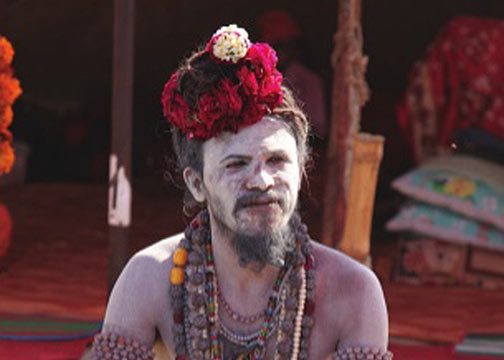Vision is the most blessed of the senses at the Kumbh Mela. Not long after you arrive at the fair, a ceaseless blare of lost-and-found announcements on the tannoys benumbs your ears. A smelly mix of drying urine and log-fire overwhelms your nostrils. A few days of street food makes a leathery toast of your tongue. A few weeks of jostling amid the world’s largest crowd tends to leave a colourful mark or two on your skin. And yet, you do not want to close your eyes.
Why would you? Imagine a city of thousands of tents that hunkers down temporarily on the sand between two storied rivers. In this city millions of people—naked and clothed, godly and ungodly—bustle around in search of absolution or money, or both. Into this colourful mix, add the urgency of everyone having to take the holy dip of absolution on ordained days—all within a few hours, all along a sandy stretch of just a few hundred metres. And you realise why the Kumbh is a wet dream for photographers.
Perhaps Santosh Misra, an engineer turned IAS officer, had the dream, too. He has spent a number of years clicking away at the largest of the four Kumbhs, at Allahabad. A selection of those images has been made into the latest coffee-tabler on the topic. (Apart from the hundreds of images by Misra, the book features 19 clicked by Amit Kilam of Indian Ocean.)
In style, there’s little that links the images; in content, there’s little that lifts them above the millions of other images of the Kumbh. The text, even when it steps out of Wiki-history, rarely complements the images. So we have Ram Puri, an American Naga sadhu, being colourfully pitched as ‘the Beverly Hills Baba’, but Annapurna Puri, who has a number of European followers, is dismissed as one with ‘an Anglo-Indian devotee’. There’s only one thing that offers a tenuous connection among the pictures—the Ganga. Its rippled reflection in every other picture is the only thing that tells the reader, ‘This too can flow.’




